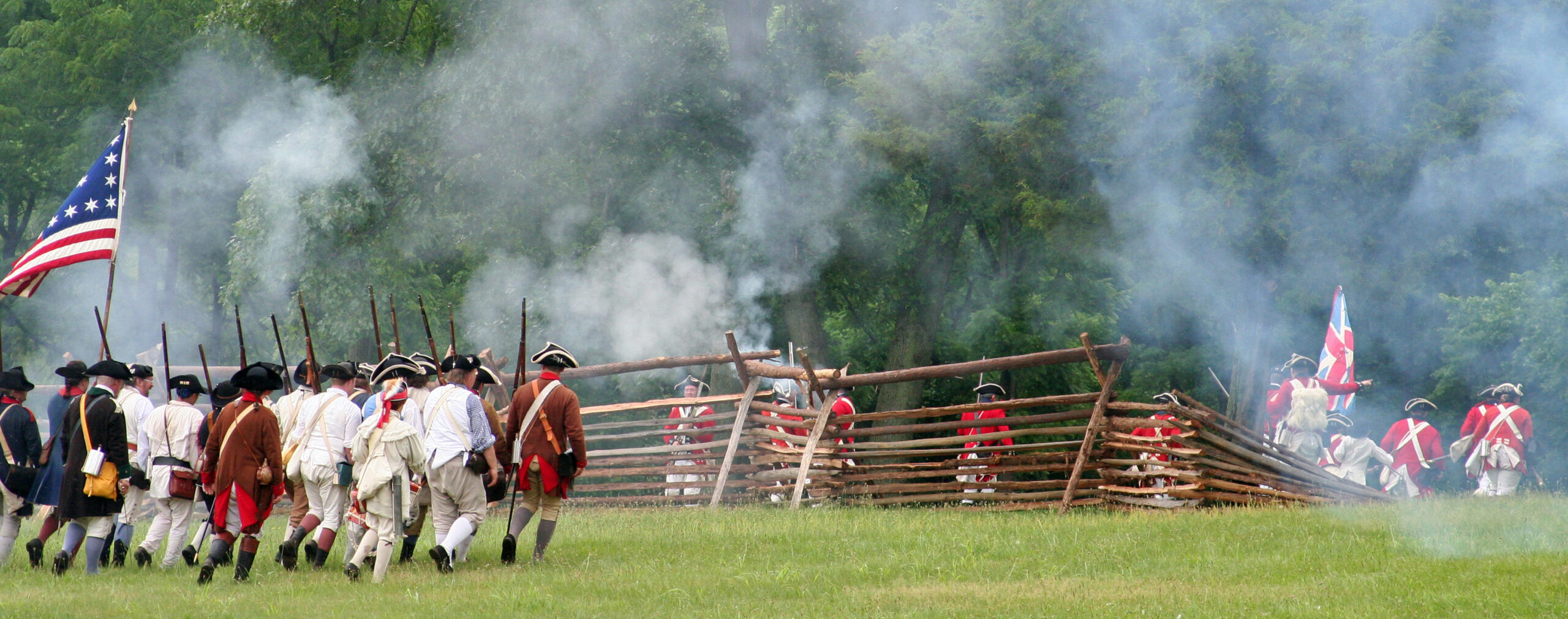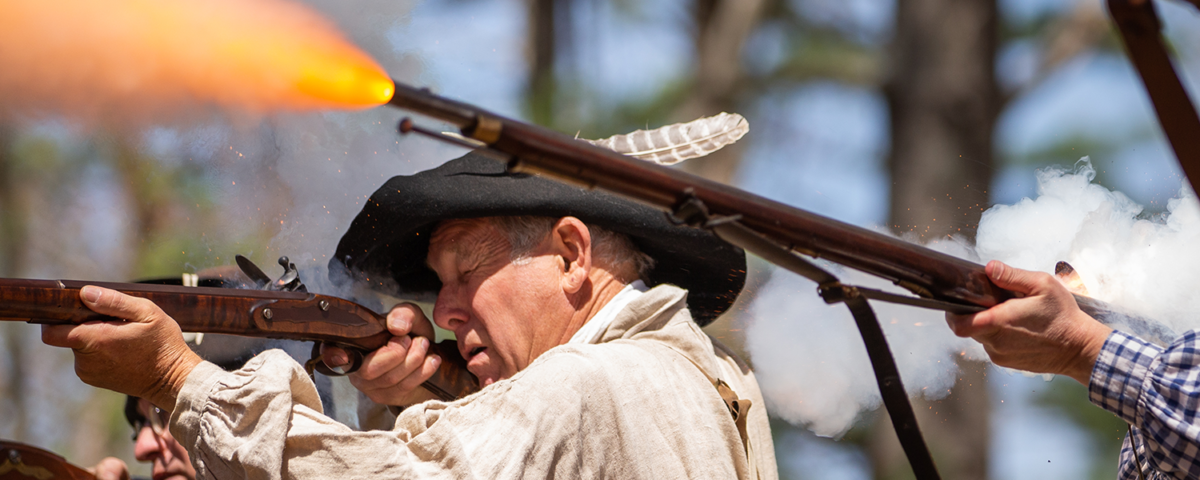
It’s Almost Time for #25!
February 20, 2024
Discovering the Magic of Appalachia:The World of Author Shannon Hitchcock
February 27, 2024The Revolution in North Carolina
In the eighteenth century, North Carolina’s population was exploding. In 1730, there were 65,000 people in the colony, and they were mostly established in the coastal plain. By 1775, there were 265,000, and they covered the whole state, reaching the Appalachian Mountains. The people came from many places, but many were Scot-Irish, German or British. About 10,000 were African Americans. There were eight Native American Tribes, with Cherokee numbering 12,000. The colony was ruled by governors appointed by the British Crown.
Royal Governor William Tryon served as governor from 1765 to 1771, and he saw the need for a centralized Government house. He petitioned for permission to build a palace that would serve as his home and the official center of government. The Tryon Palace was completed by 1770, and it hosted many state events. It was quite opulent for the day’s standards and served as the center of Colonial Government.
Further away from that center, the grip of British control and rule was not as strong. Tryon had convinced the legislature to raise taxes to fund his home, and many people of North Carolina’s backcountry saw it as an unnecessary expense and a slap in the face. There was already a deep divide between the eastern and western parts of the state. The cultures and resources were wildly different, and this divide gave rise to anger and hints of revolution.
Even before the home’s construction, in 1668, a large group of colonists in the backcountry had gathered to form the Regulators. They were angry about unfair taxes and government corruption. They didn’t necessarily want to be free from British rule. They only asked that the appointed leaders be ethical and that representation be more equitable. Specifically, they opposed the system that allowed the less productive land in the west to be taxed at the same rate as the quite fertile land in the east.
The Regulators numbered in the thousands. They were primarily lower-income people who were very aware they weren’t being treated fairly. Their opposition was the wealthy elite. These opponents had land and made up only 5% of the population but they controlled most of the government.
The construction of the home indeed flared the passions of The Regulators. In no uncertain terms, their leader William Butler said, “We are determined not to pay the tax for the next three years, for the Edifice or Governor’s House, nor will we pay for it.”
For several years, The Regulators had engaged in battles with the Colonial Government. For instance, in 1768, the Colonial Court met in Hillsborough, and the Regulators stormed the meeting, captured officials they had labeled corrupt, and dragged them through the streets. The Regulators wanted the Court to continue so that cases against Regulators could be tried in their presence.
When the judge canceled the rest of the Court session for fear of the “mob,” the Regulators rioted, vandalized the courthouse, defecated in the Judge’s seat, and left the corpse of a long-dead enslaved person on the lawyer’s bar. They did not loot the town, but targeted violence was rampant, and they burned houses before cracking the bell of the Church of England and leaving the town.
While that perhaps wasn’t the most eloquent way a point could be made, they certainly did drive their message home. Over the next three years, skirmishes were common. By 1770, officials feared for their safety. The situation escalated, resulting in another confrontation in Hillsborough and, ultimately, the Battle of Alamance.
The Regulators’ last fight occurred on May 16, 1771. Some consider the Battle of Alamance the first battle in the Revolutionary War. Many others disagree, since the Regulators were not trying to secede. However it is labeled, it was integral to the story of North Carolina.
Governor Tryon marched 1,000 men westward to squash the growing rebellion. When he received word that the Regulators were camped nearby, he divided his forces and formed two lines. The Regulators were not trained in the ways of war, and they were very disorganized. Governor Tryon said to the Regulators, “Gentlemen and Regulators: Those of you who are not too far committed should desist and quietly return to your homes; those of you who have laid yourselves liable should submit without resistance. I and others promise to obtain for you the best possible terms. The Governor will grant you nothing. You are unprepared for war! You have no cannon! You have no military training! You have no commanding officers to lead you in battle. You have no ammunition. You will be defeated!”
This was ignored, and fighting ensued. Although lacking training, at first, the Regulators fought well. They captured a canon, although they didn’t have the training or ammunition to use it. A bullet, at one point, hit the governor’s hat. The fight was fierce, and as it dwindled, the governor ordered the woods to be burned.
It isn’t known how many soldiers died. We do know that Governor Tryon took 13 prisoners. He killed one on-site, then later had six executed in Hillsborough. The rest were pardoned in exchange for an oath of loyalty.
Each year, the Battle of Alamance is reenacted on its historical site. Additionally, the television series Outlander recently featured the battle in an episode. Season 5, Episode 7 (shown below) details the struggle and remains respectful of the truth and history of the moment. The series is available on Starz and Netflix. It’s based in North Carolina and does a beautiful job of bringing to life the details of 18th-century America.
By 1771, the King of England appointed another colonial governor. Josiah Martin would prove to be the last Colonial Governor, serving only four years. Colonists found him to be even more arrogant and unpleasant. Allegiance to the Throne was unsteady at best, but it held.
But on April 19, 1775, the “shot heard round the world” rang loud and clear across the Tar Heel state. The Battles of Lexington and Concord (shown below) raged for more than 16 miles in Massachusetts, along the route between Boston and Concord. Four thousand militiamen fought 1,700 British Regulars. The Patriot casualties were 96, while the British had 273.
Governor Martin knew his time as Colonial Governor was coming to an end. He fled from New Bern under cover of darkness. The Battle of Moore’s Creek was the first battle in North Carolina. It occurred just after Governor Martin fled. Highland Scots loyalists were defeated by a Patriot militia led by future governor Richard Caswell. This Loyalist defeat was a good omen. Patriots took over the Palace, making it their capital. The first sessions of the General Assembly met there and did the work of building a new state.
On April 12, 1776, the North Carolina Provincial Congress, meeting in Alamance County, voted to authorize their delegates to the Continental Congress to vote for independence.
This became known as the Halifax Resolves, and it was the first official action by a colony calling for independence. This is why you’ll see “First In Freedom” on license plates in North Carolina.
Today, Halifax is home to the Halifax Historic District. The district has authentically restored and furnished buildings, including the 1838 Jail, the 1790 Eagle Tavern, and the Underground Railroad Trail. There are often reenactments, costumed historical interpreters, and craft demonstrations, as seen below.
The Declaration of Independence was signed between July 4, 1776, and August 2 of the same year. It was signed by 56 members of the Second Continental Congress, including three men from North Carolina. Thomas Jefferson was the primary author, but it was written by the Committee of Five, including John Adams, Roger Sherman, Robert Livingston, Benjamin Franklin, and Thomas Jefferson. Along with the Declaration came the unavoidable war.
We tend to imagine that most people would have supported the Patriot cause, but it was pretty evenly split. About one third of people living in North Carolina wanted to be independent from England. Another third was loyal to the Crown, and another third was noncommittal. This was our first civil war, especially in the South, where sons fought against fathers.
North Carolina was the setting for a number of battles during the Revolutionary War. A comprehensive list includes the Battles of Charlotte, Colson’s Mill, Cowan’s Ford, Guilford Court House, House in the Horseshoe, Lindley’s Mill, Moore’s Creek Bridge, Ramsour’s Mill, Shallow Ford, Torrence’s Tavern, Wahab’s Plantation, Wetzell’s Mill, and Pyle’s Massacre as well as Rutherford Light Horse expedition.
Back in 1763, King George III had prohibited colonists from settling west of the Appalachian Mountains. However, some Pioneers, like Daniel Boone, ignored this. The Cherokee resented this encroachment and sided with the British in the war.
In the summer of 1776, the Cherokee planned attacks all along the southern frontier. Nancy Ward, an English-speaking Cherokee, warned settlers of the plan. Many found safety at Fort Dobbs, Davidson’s Fort (in modern-day Old Fort), Fort Defiance, and many unknown areas. When they returned home, however, they found their houses burned. Later that year, a “retaliatory expedition” in the western part of North Carolina pitted militiamen against the Cherokee. The militia was led by Brigadier General Griffith Rutherford and was officially sanctioned by the Continental Congress. North Carolina brought 2,000 troops, and South Carolina brought an additional 2,000. When they arrived at the Cherokee settlements they were deserted. The villages were burnt,and the crops were destroyed.
By 1777, the Cherokee returned to their homes and saw that a treaty was needed. They sought an agreement, and in the Autumn of 1777, a treaty was signed. That should have calmed tensions, but it didn’t. Many settlers ignored it, and a group of warrior Cherokees, led by Dragging Canoe, continued to be loyal British allies. Skirmishes between Cherokee and settlers continued, and in 1780, an expedition led by John Sevier and Arthur Campbell all but decimated the Cherokee villages. This conflict ultimately resulted in the removal of the Cherokee and the Trail of Tears in 1830.
In the Piedmont of North Carolina, the Catawbans lived along the Catawba River. They were enemies of the Cherokee and were important trade partners to the settlers. The Catawbans sided with the Patriots against the British and the Cherokee during the war. The Catawbans helped the Patriots by returning runaway slaves, searching for Tories, and serving as scouts. Their villages were burned by the British. The Catawbans fought in many battles throughout the war, including the Battle of Guilford Courthouse.
In the earlier years of the war, much of the fighting was done in the north. North Carolina sent soldiers, but it was relatively quiet here. For the most part, the Tories did not resist Whig rule. Patriot merchants like John Wright Stanly and Richard Ellis sent privateers to fight British ships off the coast. Without an effective Navy, this was the best way to fight on the water.
The North Carolina Continental Line had been sent to many battles, and they were dispatched to fight in the Battle of Charleston in 1780. The city fell on May 12, and the Continental Line surrendered. This battle was a devastating loss, with the entire Whig army being dispatched. However, returning home, the North Carolinians defeated a large Loyalist force at Ramsour’s Mill.
North Carolina Patriots were integral to the victory at Kings Mountain, as well as the Battle of Cowpens. Over a six-month period, the Patriots killed over one-quarter of the soldiers that Lord Cornwallis had marched from Charleston. From January to February 15 of 1781, opposing forces engaged in what is now known as the “Race to the Dan.” The Patriot forces were initially led by Morgan and then by his successor, Nathanael Greene (shown on the opening page of this article). Skirmishes along the way occurred at Cowan’s Ford, Bruce’s Crossroads, Clapp’s Mill, and Weitzel’s Mill.
This culminated in the Battle of Guilford Courthouse on March 15, 1781. This battle lasted hours and featured innovative maneuvering and strategizing. Technically, the British won that battle, but they lost 27% of their soldiers. British Parliamentarian Charles James Fox told the House of Commons, “Another such victory would ruin the British army.”
After the battle, Cornwallis retreated to Ramsey’s Mill, where his men spent days building a bridge, then to Wilmington. In late April, he left for Virginia, with skirmishes along the way in Swift Creek, Peacock Bridge, and Halifax. Just five months later, he surrendered to George Washington at Yorktown after a long siege and the America won the war.





